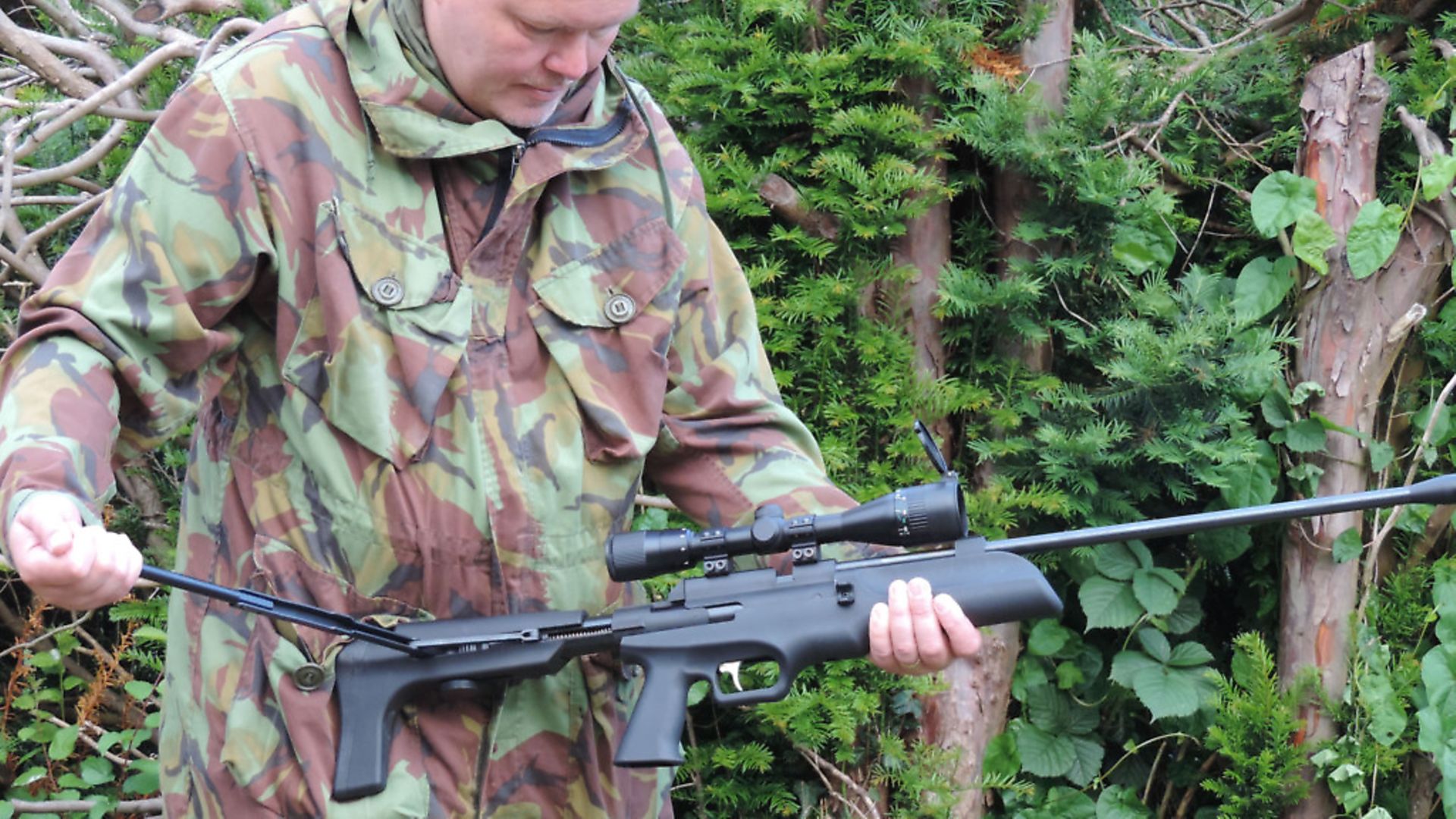John Milewski explores a distinctive, spring-piston autoloader
 credit: Archant
credit: Archant
Artemis was the ancient Greek goddess of hunting and the hunt. The Romans knew her as Diana, and I am sure many long-term airgunners are also familiar with the Diana trademark. However, Artemis is also a brand name for shotguns and airguns that is relatively new to the UK, and this month, I've kindly been loaned a unique-looking sidelever by Protek Supplies for a review.
The overall looks of the Artemis SR900S are very tactical in nature, which in simple terms means the rifle looks semi-military, a look I tend to like because it suggests ruggedness, strength and the rifle won't look abused or tatty if it gets scratched in the field. The Artemis is competitively priced at under £160 and has one or two features that make it stand out from the crowd. This is a high-power, spring-piston airgun that is also a repeater, thanks to its 10-shot .177 magazine and two spares that come as standard. Now, this is something more usually associated with pre-charged pneumatics, so a multi-shot spring rifle that provides around 10 ft.lbs. of power has to be worth a look. A single-shot adaptor is also included for situations where magazines are not required, such as an HFT event. Both the adaptor and magazines are kept in place by means of a magnet.
 credit: Archant
credit: Archant
Semi-bullpup
A sidelever is used to cock the mainspring, and when I first handled the Artemis I noticed the lever was set further back in the stock than on conventional sidelevers such as the Webley Tracker. This feature makes the stock look and feel like a bullpup, but thanks to the long barrel, overall length is no shorter than a conventional air rifle. The rifle comes with a screw-in silencer, but no open sights, making it a 'scope only option, much to my frustration because I tend to use opens rather than optics for the majority of my shooting. Nevertheless, I dusted off an old telescopic sight left over from my HFT days from more than a decade ago, and went to the range to see how this rifle performs.
Loading up the magazine can be a little complex if you don't know how, and the instructions accompanying the rifle were unclear on this process. I've therefore detailed the procedure in the accompanying photos.
The stock is adjustable for length, which is a very useful feature, and the padded cheek piece is ambidextrous in nature. I wondered whether the sidelever's presence would be uncomfortable for left-handed shooters because it rests close to the face when in the aiming position. However, clubmates who tried the rifle from their left shoulders found it comfortable in use, confirming its semi-ambidextrous nature.
 credit: Archant
credit: Archant
High mounts are essential
Less comfortable were the medium mounts on the telescopic sight that I initially tried to use. Clearly not the rifle's fault, but it is something to bear in mind because the in-line nature of the stock/air chamber requires high mounts for a clear sight picture. There is a useful arrestor head behind the right rails (right-hand rails? Sight rails? Or is this airgun speak?) and this will prevent scope creep if the rear mount is backed up against it.
I was pleasantly surprised with the trigger, probably because I am used to older rifles and perhaps am not used to the excellent triggers that many of today's airgunners take for granted. The trigger broke at just over 2lbs and felt very crisp with no creep experienced. Having such an excellent trigger on this rifle certainly provides each shot with an excellent start to its journey towards the target.
 credit: Archant
credit: Archant
Ideal for shooting free standing
For the majority of my testing, I shot from the standing position and kept ranges to a maximum of 30 yards. I am comfortable with the standing position and again, contrary to many others, am less comfortable with a semi-supported position, especially when testing a spring-powered rifle. Using the free-standing position, I was able to connect with 40mm kill zones on a variety of targets placed between 10 and 30 yards away on each occasion I played my part. I called most of my missed shots because I knew when I held on too long before releasing the trigger or jerked it before I could obtain a comfortable sight picture.
 credit: Archant
credit: Archant
I found the magazine-loading feature really handy because once loaded, all I had to do was cock the sidelever and shoot. Once the final shot had been taken, the magazine prevents the sidelever from returning to its resting position, thereby indicating that the mag' is empty. At this point, it is necessary either to recharge with a loaded mag' or use the single-shot tray to discharge the rifle, as the anti-bear trap feature prevents de-cocking.
I'm always on the look out for something a little different, and this rifle is certainly distinctive. A 'tactical' looking, full-power spring rifle with a 10-shot magazine has to be worth a look if you're looking for performance on a budget with that something extra that makes it stand out from a crowd. My sincere thanks to Vic at Protek Supplies for the loan of the test rifle and for explaining the magazine loading procedure to me.
Visit the Protek Supplies website here.